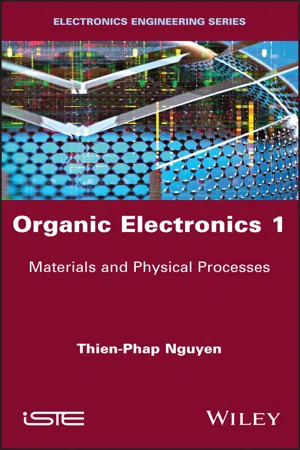
- English
- ePUB (mobile friendly)
- Available on iOS & Android
About this book
Due to their special properties, organic semiconductors enable the development of large-area, low-cost devices, paving the way for flexible and nomadic applications that advantageously replace those made with traditional semiconductors.
This book describes the properties and deposition methods of organic semiconductors, transparent conductive materials or metals which are used in the fabrication of organic devices. The physical processes (optical, electrical and interface) that control the mechanisms in the formation and transport of the charge carriers of the materials are studied and explained in detail.
Organic Electronics 1 introduces the fundamental and applied aspects of the field of organic electronics. It is intended for researchers and students in university programs or engineering schools specializing in electronics, energy and materials.
Frequently asked questions
- Essential is ideal for learners and professionals who enjoy exploring a wide range of subjects. Access the Essential Library with 800,000+ trusted titles and best-sellers across business, personal growth, and the humanities. Includes unlimited reading time and Standard Read Aloud voice.
- Complete: Perfect for advanced learners and researchers needing full, unrestricted access. Unlock 1.4M+ books across hundreds of subjects, including academic and specialized titles. The Complete Plan also includes advanced features like Premium Read Aloud and Research Assistant.
Please note we cannot support devices running on iOS 13 and Android 7 or earlier. Learn more about using the app.
Information
1
Semiconductor Theory
1.1. Introduction
Table of contents
- Cover
- Table of Contents
- Title Page
- Copyright
- Introduction
- 1 Semiconductor Theory
- 2 Materials
- 3 Optical Processes
- 4 Electronic Processes
- 5 Interface Processes
- List of Acronyms
- References
- Index
- End User License Agreement